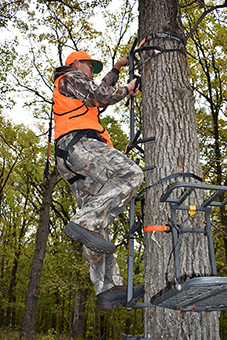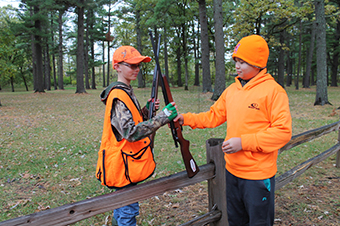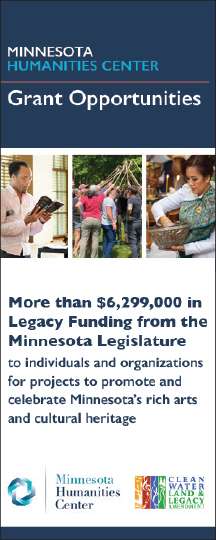Wild animals such as deer and squirrels don’t really stop to think about safety. The way they move across the landscape and react to threats is largely a matter of instincts, survival mechanisms that have evolved over thousands of years.
For the humans who hunt the squirrels and deer, though, it’s a different story. Staying safe is a learned behavior, one that’s been the focus of the Minnesota Department of Natural Resource’s firearms safety education program for more than half a century.
Since the program began in the 1950s, more than 1.5 million students have been certified in firearms safety. Over that same time, the number of firearms-related hunting incidents has declined dramatically.
“Hunting is one of the safest recreational activities there is, and it’s a great way for people of all ages to experience nature and enjoy the outdoors,” said Col. Rodmen Smith, director of the DNR Division of Enforcement. “The best way to ensure that every hunter returns home safely at the end of every hunt is by educating all new hunters, regardless of their age, about safe firearms handling.”
The classroom sessions
The DNR and its network of more than 4,000 volunteer instructors put on firearms safety classes throughout the year across the state. During these classes, students learn about firearms and how to handle them safely, as well as wildlife conservation, outdoor survival and hunter responsibility. Following the classroom training, students participate in a field day that takes them through a number of scenarios illustrating good safety habits, along with range practice firing .22-caliber rifles. Youth ages 11 and older can attend a firearms safety certification course and receive their firearms safety certificate at age 12. This certification is required of anyone born after Dec. 31, 1979, before they can purchase a hunting license in Minnesota. An online training option is available for adults. For more information about firearms safety training, including the different requirements for hunters age 18 and older, see mndnr.gov/safety/firearms.
Safety in the field
Whether they’re targeting big-game species such as deer or small-game species like rabbits and squirrels, hunters need to keep safety as their top priority anytime they’re in the field. The three most common factors in hunting-related firearms incidents are careless handling, not knowing the safe zone of fire, and not being sure of what’s beyond the target. Hunters should follow the four tenets of safe firearms handling, whether they’re hunting alone or in a group:
- Treat every firearm as if it’s loaded.
- Always control the muzzle of your firearm, and make sure it’s not pointed at anyone.
- Be certain of your target and what’s beyond it.
- Keep your finger off the trigger and outside the trigger guard until you’re ready to shoot.
Stay Safe Outdoors
Teaching people about the proper handling of firearms isn’t the only area where the DNR works to make sure people stay safe while enjoying the outdoors. Other safety training includes:
- Boat and water safety
- Bowhunter education
- All-terrain vehicle safety training
- Off-highway motorcycle safety training
- Snowmobile safety training
To learn more about these classes and who’s required to take them, log on to mndnr.gov and click on the “Education & Safety” link on the top of the page.











